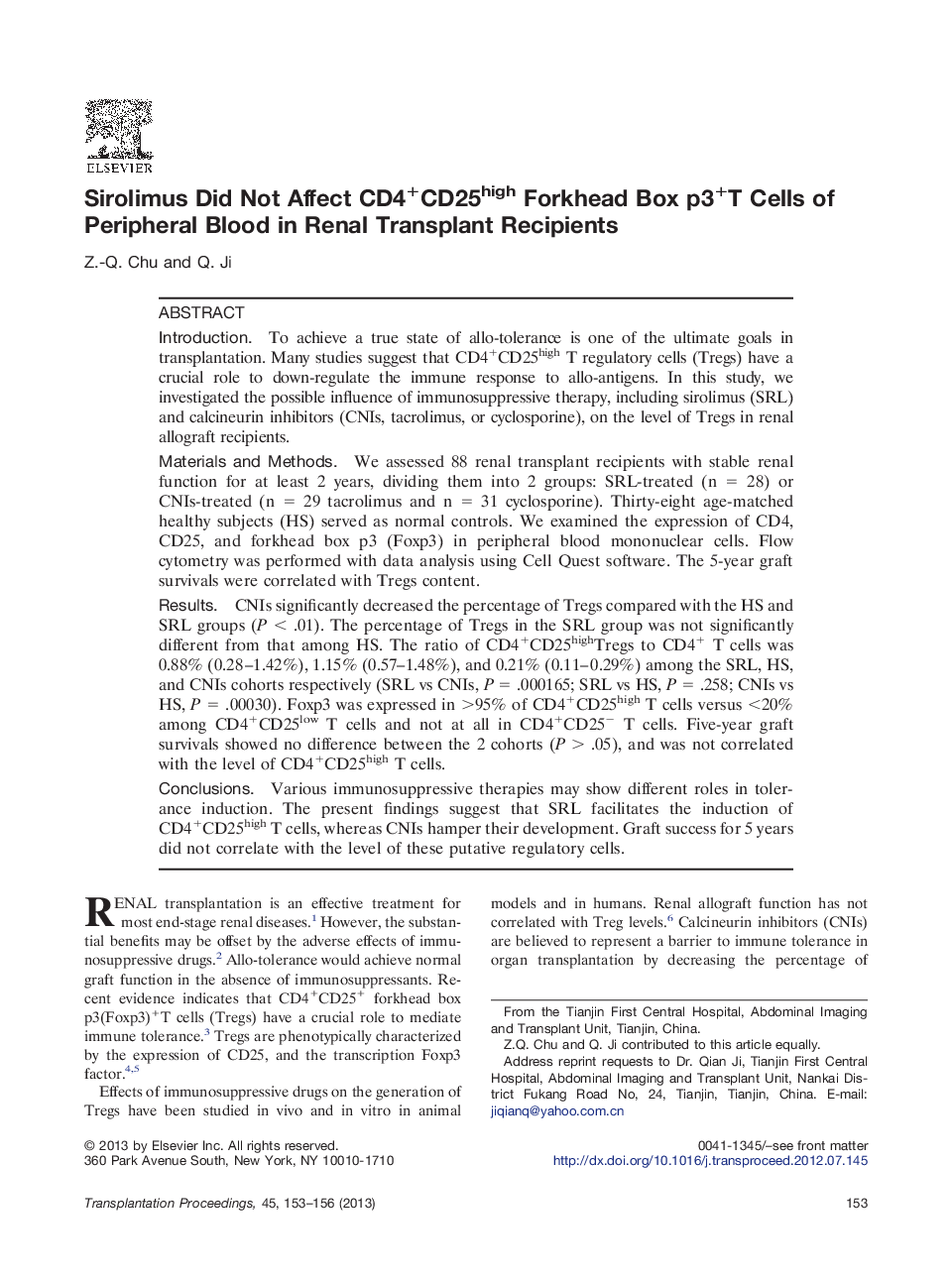| Article ID | Journal | Published Year | Pages | File Type |
|---|---|---|---|---|
| 4257080 | Transplantation Proceedings | 2013 | 4 Pages |
IntroductionTo achieve a true state of allo-tolerance is one of the ultimate goals in transplantation. Many studies suggest that CD4+CD25high T regulatory cells (Tregs) have a crucial role to down-regulate the immune response to allo-antigens. In this study, we investigated the possible influence of immunosuppressive therapy, including sirolimus (SRL) and calcineurin inhibitors (CNIs, tacrolimus, or cyclosporine), on the level of Tregs in renal allograft recipients.Materials and MethodsWe assessed 88 renal transplant recipients with stable renal function for at least 2 years, dividing them into 2 groups: SRL-treated (n = 28) or CNIs-treated (n = 29 tacrolimus and n = 31 cyclosporine). Thirty-eight age-matched healthy subjects (HS) served as normal controls. We examined the expression of CD4, CD25, and forkhead box p3 (Foxp3) in peripheral blood mononuclear cells. Flow cytometry was performed with data analysis using Cell Quest software. The 5-year graft survivals were correlated with Tregs content.ResultsCNIs significantly decreased the percentage of Tregs compared with the HS and SRL groups (P < .01). The percentage of Tregs in the SRL group was not significantly different from that among HS. The ratio of CD4+CD25highTregs to CD4+ T cells was 0.88% (0.28–1.42%), 1.15% (0.57–1.48%), and 0.21% (0.11–0.29%) among the SRL, HS, and CNIs cohorts respectively (SRL vs CNIs, P = .000165; SRL vs HS, P = .258; CNIs vs HS, P = .00030). Foxp3 was expressed in >95% of CD4+CD25high T cells versus <20% among CD4+CD25low T cells and not at all in CD4+CD25− T cells. Five-year graft survivals showed no difference between the 2 cohorts (P > .05), and was not correlated with the level of CD4+CD25high T cells.ConclusionsVarious immunosuppressive therapies may show different roles in tolerance induction. The present findings suggest that SRL facilitates the induction of CD4+CD25high T cells, whereas CNIs hamper their development. Graft success for 5 years did not correlate with the level of these putative regulatory cells.
